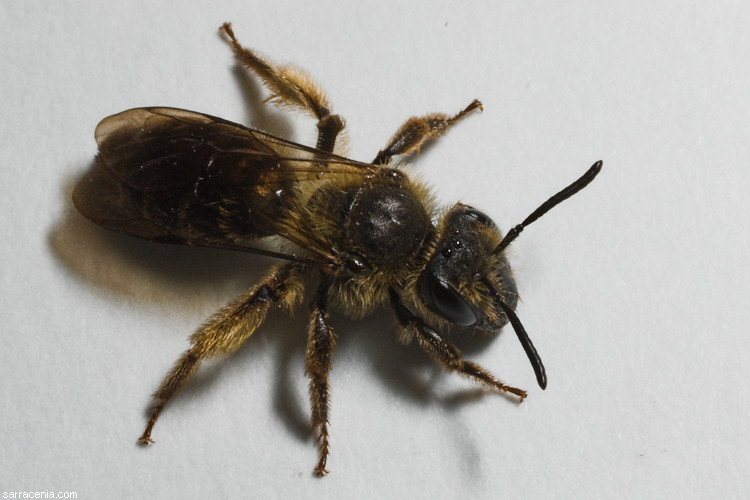
The real pollinator:
And this brings us to the above little bee. While Stephen and I were watching the European honeybees in the site, we both
also observed a second bee, one that was a little smaller and much darker, visiting Darlingtonia flowers.
There was a marked difference on how the two bees entered the flowers.
The European honeybees had tremendous difficulty doing this, and even upon approach to the Darlingtonia flowers
had to hover and buzz side to side in a zigzag way, as if trying to figure out the flower structure. Meanwhile, the
little black bees could fly right up to a flower and disappear inside in an instant. They'd enter so quickly and easily, that
it was often difficult to say if a flower actually had the bee inside. But by squeezing the flower slightly you'd hear the
bee protest with a buzz. We captured these bees by dropping mesh pollination baggies over the flowers once the bee had
entered.
Back at the University of California (Davis), this little bee was identified for me by Robbin Thorpe as
female Andrena nigrihirta, a generalist pollinator that has a range that occurs in northern North America. Its range
includes all the range of Darlingtonia.
I'd like to mention that Lynn Kimsey and Art Shapiro (both also at UCDavis) were very helpful with my bee
questions!